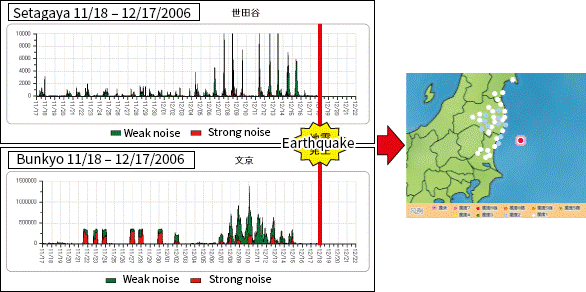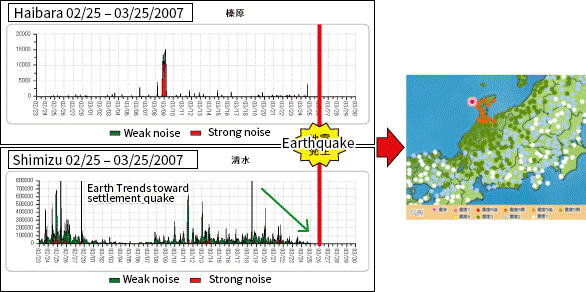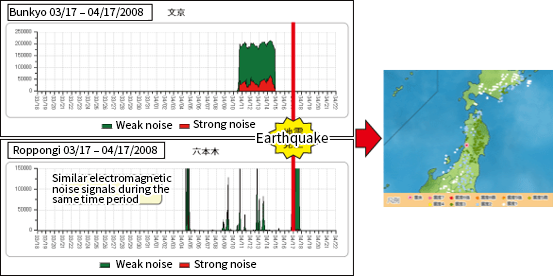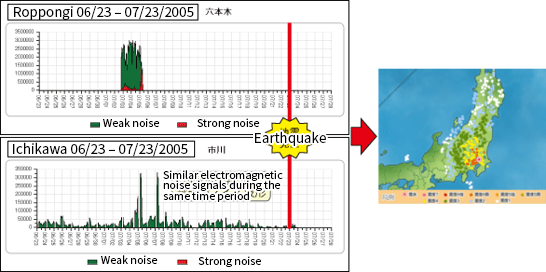Reading Noise Data
3 Principles of Earthquake Prediction
- What is the magnitude of an earthquake?
It is proportional to the total amount of anomalous data results, and is inversely proportional to the distance to the epicenter.
- Where is the location of the epicenter?
Around the center of several observation points that had data anomalies.
- When will it happen?
2 or 3 days after electromagnetic signals settled (disappeared).
Earthquake Predictions Using Electromagnetic Noise
- An abnormally large amount of noise was detected compared to the daily amount.
There is a possibility of an earthquake.
- A large amount of noise was detected almost simultaneously at several different observation points.
There is a high possibility of an earthquake.
- The amount of noise detected increased daily and then decreased and settled.
There is a possibility of an earthquake occurring within days.
- The amount of noise detected suddenly increased and then rapidly decreased and settled.
There is a possibility of an earthquake within 2 weeks.
- A large amount of noise was detected but it is all “green” in the graph.
There is a possibility of a large earthquake far away.
- A large amount of noise was detected but it is all “red” in the graph.
There is a possibility of a large earthquake nearby.
Data Distribution Pattern Examples

Normal distribution bell-shaped



Bar-shaped



Wide bar-shaped data, dangerous situation


Long-lasting Signals Data is a Precursory to a Large Earthquake


We discovered that the amount of electromagnetic noise was unexpectedly large as an earthquake precursor.
A massive amount of electromagnetic noise is produced for a long period of time before a large earthquake occurs.
It was thought before that “electromagnetic signals could not come up to the earth’s surface from deep underground without going through bedrock and the earth’s crust.”However, this concept was a mistake. The electromagnetic signals are generated in a vast area underground, and the rock destruction experiment showed that a 100 mm rock produced 0.1 volts of electricity. A 10 km rock would produce 10 kv.